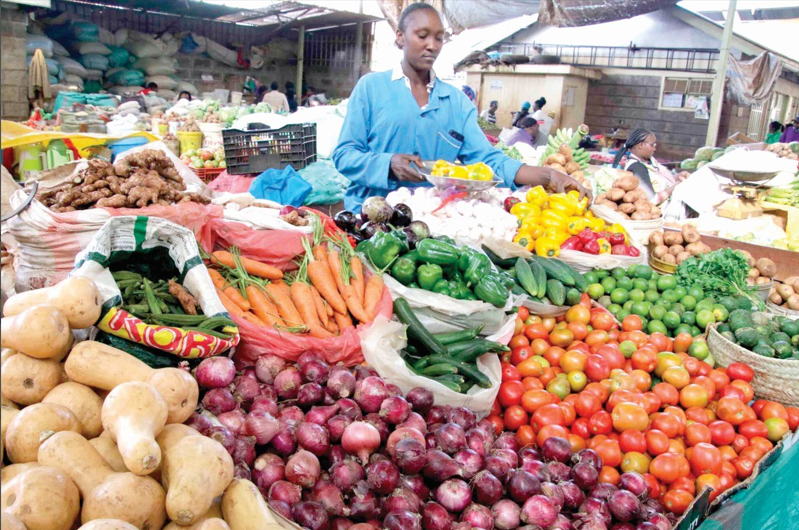Costly meals for Kenyans as grocery prices soar by 53pc
By Herald Aloo, December 4, 2023The prices of groceries in Kenya have risen by the steepest margin compared to any other food items over the past one year, making it costly for households to prepare meals, especially during this festive season.
This comes at a time when Kenyans are grappling with meagre pay and salary delays, which have reduced their purchasing power amid a tough economic environment, meaning some households might be forced to forgo their favourite dishes.
The price of onion leaks and bulbs, for instance, has gone up by 53.8 per cent in the last 12 months to November 2023 to retail at an average price of Sh154.5 per kilogramme.
Last November, a kilo of onion retailed at Sh100.5 on average, the latest official data by the Kenya National Bureau of Statistics (KNBS) shows. That of carrots has realised a 27.7 per cent hike to rest at a current price of Sh87.9 per kilogramme compared to Sh68.8 recorded in the same period in 2022.
Tomatoes, which have faced a drastic supply decline in the last two months, now go for Sh95.9 per kilogramme, representing a sharp 40.4 per cent price rise compared to Sh68.3 price tag in November 2022. Oranges are 13.2 per cent up year-on-year, selling at Sh84.9 per kilo in November 2023. Others, such as Sukuma wiki and cabbages, have, however, dropped by smaller margins of 2 per cent and 4.1 per cent per kilo, respectively.
The changes in average retail prices of groceries washed away the benefits of drops in the prices of other food items such as maize flour, wheat flour, and cabbages in the month of November when inflation eased marginally to 6.8 per cent in November. The inflation rate was previously 6.9 per cent in October. In November, grocery prices pushed up by 7.6 per cent the consumer price indices (CPI) of commodities under the food division, which now consumes about a third of every household’s income.
Inflation indicator
“This was mainly driven by increases in prices of commodities under Transport (13.6pc); Housing, Water, Electricity, Gas and other fuels (8.5pc); and Food and Non-alcoholic Beverages (7.6pc) between November 2022 and November 2023,” KNBS Director General Macdonald Obudho said in the November inflation indicator.
“During the same period, however, prices of potatoes, maize flour-sifted, and cabbages went down by 7.1, 6.5, and 3.6 per cent, respectively.” This is the fifth month in a row the country’s inflation rate has remained within the preferred range of between 2.5 and 7.5 per cent, with the Central Bank of Kenya (CBK) anticipating that the cost of living will continue lowering in the first quarter of next year.
The rise in grocery prices is caused by the shortages in the country due to previous waves of drought, the current El-Nino effect, which is destroying the commodities at the farm level, as well as rising costly transport linked to hiked fuel prices. The situation has been exacerbated by the costly importation – necessary to plug the deficit – from neighbouring countries like Tanzania. On one hand, Tanzania has limited onion export while the local currency is also gradually gaining strength against the Kenya shilling, causing additional import costs for Kenyans.
Uganda and Tanzania are the main source of Kenya’s food imports like legumes, fruits, onions, cereals, potatoes and tomatoes. But most imported onion supply comes from Tanzania, India, and South Africa.
More Articles

